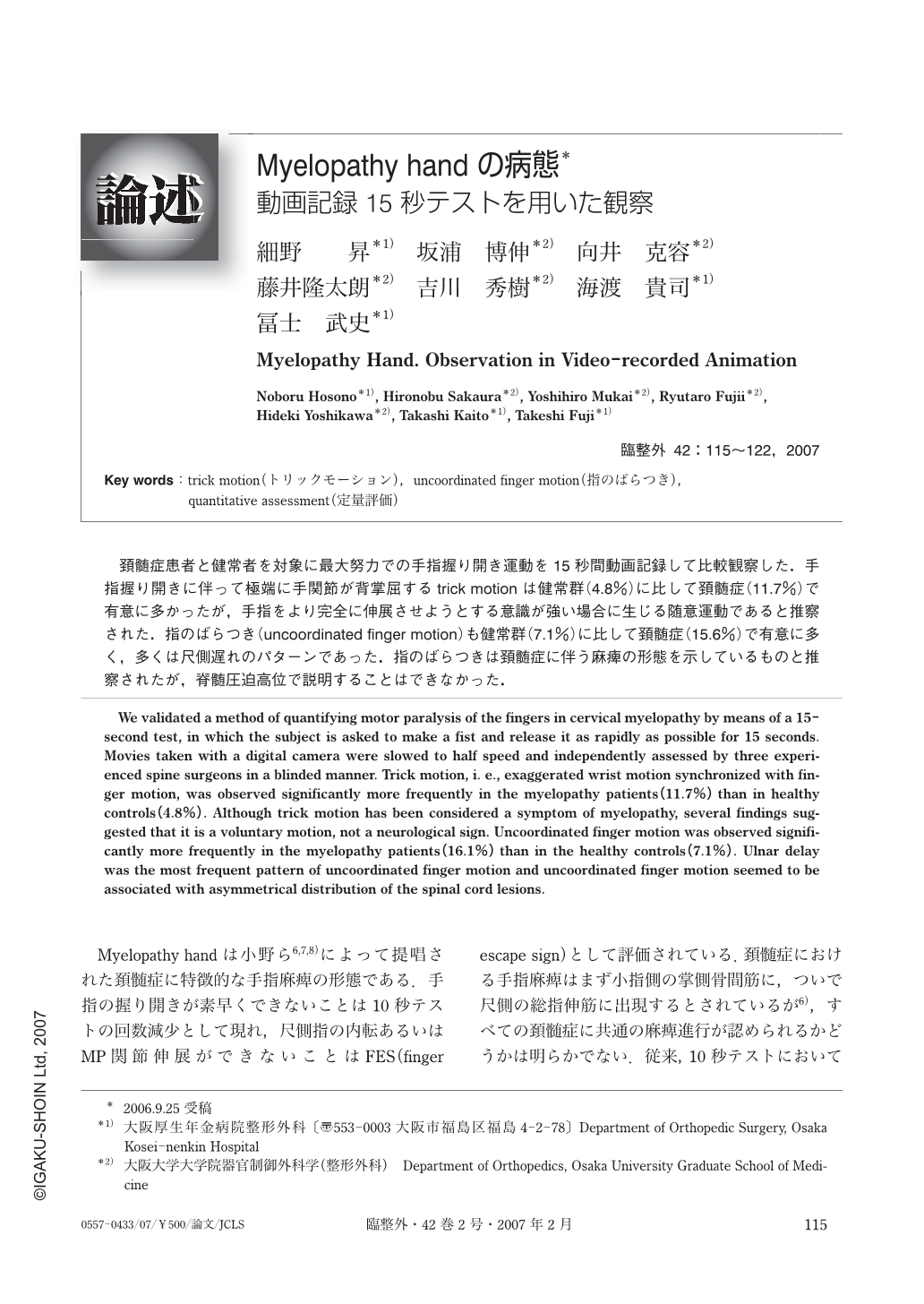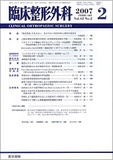Japanese
English
- 有料閲覧
- Abstract 文献概要
- 1ページ目 Look Inside
- 参考文献 Reference
頚髄症患者と健常者を対象に最大努力での手指握り開き運動を15秒間動画記録して比較観察した.手指握り開きに伴って極端に手関節が背掌屈するtrick motionは健常群(4.8%)に比して頚髄症(11.7%)で有意に多かったが,手指をより完全に伸展させようとする意識が強い場合に生じる随意運動であると推察された.指のばらつき(uncoordinated finger motion)も健常群(7.1%)に比して頚髄症(15.6%)で有意に多く,多くは尺側遅れのパターンであった.指のばらつきは頚髄症に伴う麻痺の形態を示しているものと推察されたが,脊髄圧迫高位で説明することはできなかった.
We validated a method of quantifying motor paralysis of the fingers in cervical myelopathy by means of a 15-second test, in which the subject is asked to make a fist and release it as rapidly as possible for 15 seconds. Movies taken with a digital camera were slowed to half speed and independently assessed by three experienced spine surgeons in a blinded manner. Trick motion, i. e., exaggerated wrist motion synchronized with finger motion, was observed significantly more frequently in the myelopathy patients (11.7%) than in healthy controls (4.8%). Although trick motion has been considered a symptom of myelopathy, several findings suggested that it is a voluntary motion, not a neurological sign. Uncoordinated finger motion was observed significantly more frequently in the myelopathy patients (16.1%) than in the healthy controls (7.1%). Ulnar delay was the most frequent pattern of uncoordinated finger motion and uncoordinated finger motion seemed to be associated with asymmetrical distribution of the spinal cord lesions.

Copyright © 2007, Igaku-Shoin Ltd. All rights reserved.


